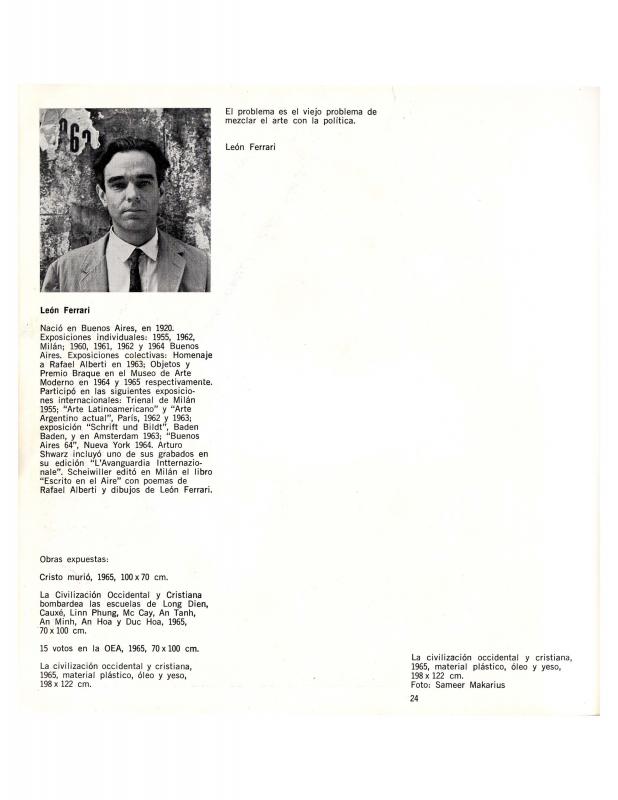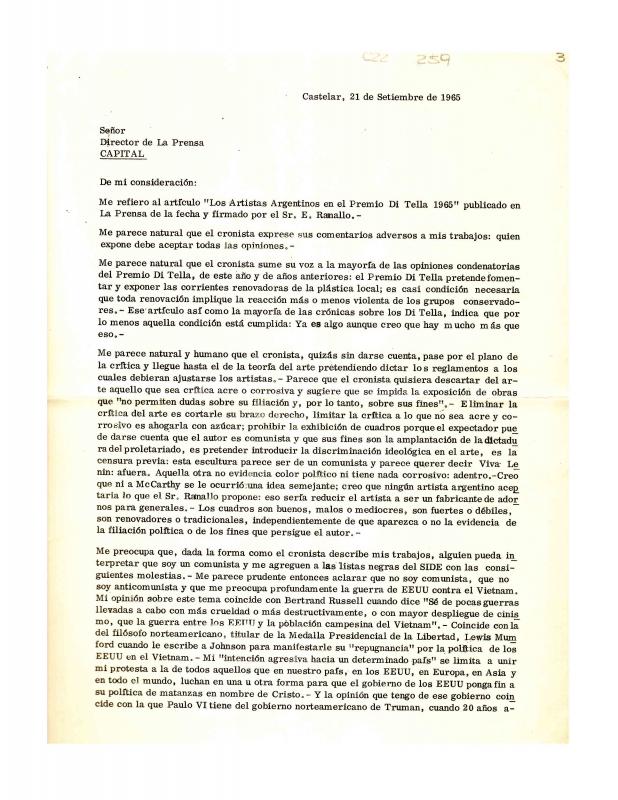León Ferrari (1920–2013) was born in Buenos Aires, the son of Augusto Cesare Ferrari, the Italian artist and architect. The younger Ferrari was a latecomer to the plastic arts, a status which allowed him to function as a link between the generation of artists from the late fifties and the young avant-garde of the sixties. His early works were ceramic sculptures, but in later years he experimented with wire structures, with a visual form of writing, and with collages. There are two distinct themes running through his work: one is a strong condemnation of military dictatorships, American imperialism, and the ideology of the Catholic Church. The other has a more formalistic quality, expressed in a conceptual style and, at times, in the surrealist tradition. His 1965 object-montage, titled Civilización Occidental y Cristiana [Western Christian Civilization], was censured at theCentro de Artes Visuales del Instituto Torcuato Di Tella [the Torcuato Di Tella Institute’s Visual Arts Center] (see documents 743800, 744085, and 761879). It depicts a Christ mounted on a US Air Force bomber that is plunging Earthward. Ferrari was involved in the political conceptualism movement of the seventies (particularly Tucumán Arde, in 1968). In response to the most recent Argentine military dictatorship’s repressive regime (1975-83), he went into exile in Brazil, where he explored a variety of ideas, such as formalism and the reproducibility of a work, as well as the spatial relationship between sculpture and music (see documents 743960, 744392, and 743870, among others). In 1984 his work was once again exhibited in Buenos Aires, where he finally returned and settled. Correspondence between León Ferrari, the Argentine artist, and the Spanish writer Rafael Alberti (Cádiz, 1902-1999). Alberti spent most of his years in exile living in Buenos Aires, until he settled in Rome in 1963. In 1963, León Ferrari produced some calligraphy pieces such as Carta a un general [Letter to a General], as well as several of his twisted writings and wire sculptures. In 1964 he was in touch with the artists who were involved with the Torcuato Di Tella Institute, and had an exhibition at Galería Lirolay. They published a book in tandem: Rafael Alberti, Escrito en el aire: 9 poemas inéditos de Rafael Alberti para 9 dibujos de León Ferrari [Rafael Alberti, Written in the Air: 9 unpublished poems by Alberti to accompany 9 drawings by León Ferrari] (Milan: All´insegna del pesce d’oro, 1964).






